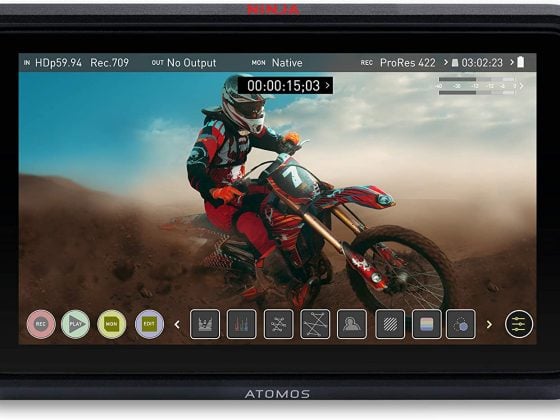As cameras and sensors explore computational photography, we’ll see sensor technology change in exciting new ways to support what has become possible with faster real-time processing.
One such technology is the Quad Bayer Sensor that Sony has developed and can already be found in the Mavic Air II. They have also developed a 48MP full-frame version that we now see in the Sony A7sIII and the Sony FX3.
The Quad Bayer sensor is a pretty cool advancement in sensor technology, and it has the potential to be a true game-changer for our hybrid photo/video systems.
What Is A Quad Bayer Sensor?
It’s a sensor where each photosite is divided into four without offsetting the RGB filter.
What this means is each color section can function in two ways.
- As a low-megapixel sensor, the quad sensor sites act as one pixel to perform better when the photon coherency is much lower, like in low-light situations. This improves sensitivity and efficiency.

- As a high-megapixel sensor – each photosite pulls its color data, which is useful in high photon coherency situations like direct sunlight where the photon coherency is high.

Applications For Photography
The Quad Bayer sensor is not necessarily that useful for still photography, where there is no reason not to always capture with the higher resolution and then scale the image for better low-light performance.
This was a common misconception about the A7sII vs. the A7rII. People would assume the A7sII was better in low light for stills; however, if you scaled the image from an A7rII, the results were the same.
Generally, if the processing power is good enough to scale in-camera and on the fly, there is not really much downside to using higher-resolution sensors in low light.
We even see cameras like the Leica M11 that allow you to select different resolutions by binning the pixels, which actually improves dynamic range.
Applications For Videography
The Quad Bayer sensor is technically a high-resolution, high-pixel pitch sensor, but with intelligent analog to digital conversion processing, it can play two different roles.
- Superior 4k low-light performance
- A high-pixel pitch sensor that can produce 8k images
For video, a quad Bayer sensor can be very useful because it would allow you to adjust your resolution based on your lighting situation. If you are in full bright light, you could capture 8k by using every single photosite as its own, or in low light; you can combine each color quad section for better low-light shooting.
Why Do You Need Bigger Photosites For Low Light?
You need bigger photosites for low light because as the light decreases, so does the density or the amount of photons. A bigger photosite allows the surface to capture a signal from a larger area to maintain an acceptable voltage.
In daylight, there are 11,400 photons in a cubic millimeter. Energy from the sun creates 3.10 electron volts, the most energetic light being purple light. The orange light is 2.06eV. If you decrease the coherency of the photons in low light, you need a much bigger surface to capture the same amount of energy since the density of photons has decreased.
I’m not about to do the math on photon coherency and ISO, but I think you understand. Cut the light by 1/64, and you’ll need a much larger surface area to absorb the same energy. Light has a finite resolution in the form of how much energy it can create when interacting with electrons.
This is why there is little point in buying a high-megapixel camera if you mostly shoot in low light with fast shutters. The coherency and energy of the available light still limit you. More pixels in a smaller configuration are less efficient at capturing this energy. Having a Quad Bayer sensor gives you the best of both worlds as long as no strange artifacts come from having a 2×2 configuration for each color pixel array.
I’ve been trying to figure out for some time what Sony could do that would be gaming-changing for the A7sIII. I think this is it.
The Potentials Of Quad Bayer Sensor In A Future Camera Like The Sony A7sIII
The whole life and soul of the A7sII was low-light performance. A Quad Bayer sensor will allow the camera to maintain its amazing 4k low light performance by using the quad configuration data as a single pixel. Still, it would also allow the camera to produce an 8k image when in well-lit situations by using the 1×1 pixel data.
What else is cool about shooting 8k is that you can shoot at a lower subsampling, like a 4:2:0, but increase the subsampling by scaling down in post-production. So 8k is not useless. You can always pull a better image by scaling down something larger. We see cameras like the Canon R5 and the Nikon Z8 doing this, pulling the 8k data for their 4k video modes.
A Quad Bayer sensor would make the Sony A7sIII an incredibly versatile tool with insane capabilities unmatched by the competition.
Update: The Sony A7sIII is a quad-Bayer sensor derived from a 48MP sensor. The camera takes all of that information and combines it to produce amazing video results, but unfortunately, you can never shoot in the 48MP mode; it’s locked as a 4K camera only.
| **This website contains affiliate links. We will earn a small commission on purchases made through these links. Some of the links used in these articles will direct you to Amazon. As an Amazon Associate, I earn from qualifying purchases. |







